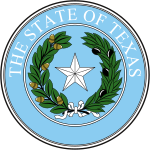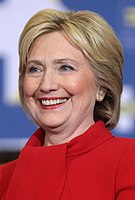| ||||||||||||||||||||||||||
| Turnout | 59.4% (of registered voters) 46.5% (of voting age population)[1] | |||||||||||||||||||||||||
|---|---|---|---|---|---|---|---|---|---|---|---|---|---|---|---|---|---|---|---|---|---|---|---|---|---|---|
| ||||||||||||||||||||||||||
| ||||||||||||||||||||||||||
| ||||||||||||||||||||||||||
| Elections in Texas |
|---|
 |
|
|


The 2016 United States presidential election in Texas took place on November 8, 2016, as part of the 2016 United States presidential election. Primary elections were held on March 1, 2016.
Texas was won by Republican Donald Trump and his running mate Mike Pence by a 8.99% margin over Democrats Hillary Clinton and Tim Kaine. Texas assigned its 38 Electoral College votes to the state's popular vote winner, but two faithless electors chose other candidates, making Texas the only state in 2016 to give Trump fewer than the assigned electoral votes. Even then, its 36 electoral votes were Trump's largest electoral prize in 2016.
When the Electoral College met on December 19, 2016, only 36 out of the 38 electors voted for Trump for president. Two electors defected; one voted for Ohio Governor John Kasich, and the other voted for former Congressman Ron Paul, making the latter, at 81 and despite not running, the oldest person to ever receive an electoral vote. For vice president, 37 electors voted for Pence, while one voted for Carly Fiorina. This was the first time since 1976 where a Republican presidential candidate lost a pledged vote via a faithless elector; that year, Gerald Ford lost a Washington state electoral vote to fellow Republican Ronald Reagan. Additionally, this was the first time since 1972 that the winning presidential candidate lost an electoral vote, when Richard Nixon lost a Virginia electoral vote to Libertarian Party nominee John Hospers.
Texas was one of the eleven states (and the District of Columbia) where Clinton improved on Barack Obama's performance in 2012.[4] Clinton lost Texas by a smaller margin than any Democrat since 1996 (though Barack Obama got a slightly larger percentage of the vote in 2008), which analysts attributed to Trump losing ground with college-educated white voters. Trump's performance in Texas was the weakest of any victorious Republican nominee since Richard Nixon became the last Republican to be elected president without Texas in 1968. Trump was the tenth consecutive Republican presidential nominee to win Texas, beginning with Reagan in 1980. Nevertheless, he became the first Republican to win the White House without carrying Bexar County since Richard Nixon in 1968, as well as the first to do so without carrying Fort Bend County since Herbert Hoover in 1928, and to do so without carrying Harris or Dallas County since Calvin Coolidge in 1924.
- ^ "Turnout and Voter Registration Figures (1970-current)".
- ^ Walsh, Sean Collins (December 19, 2016). "All but 2 Texas members of the Electoral College choose Donald Trump". Statesman. Archived from the original on December 21, 2016.
- ^ Which candidates did the seven "faithless" electors support? CBS News (December 21, 2016). Retrieved December 9, 2023.
- ^ "Vote Swing - 2016 Presidential General Election Data - National". Dave Leip's Atlas of U.S. Presidential Elections. Retrieved October 27, 2018.
Cite error: There are <ref group=lower-alpha> tags or {{efn}} templates on this page, but the references will not show without a {{reflist|group=lower-alpha}} template or {{notelist}} template (see the help page).




